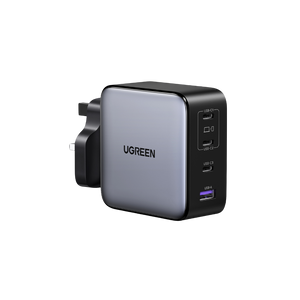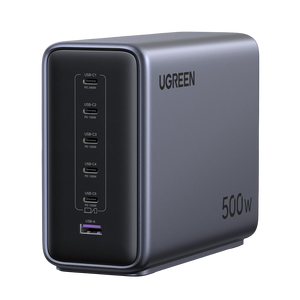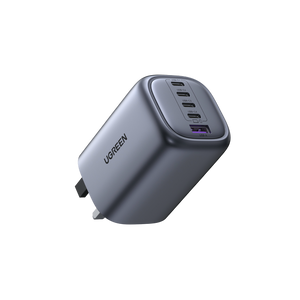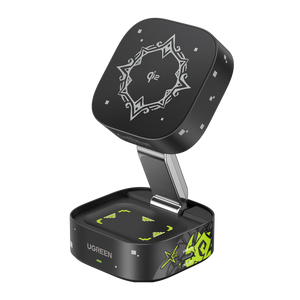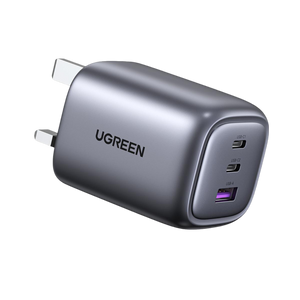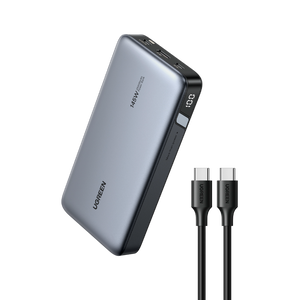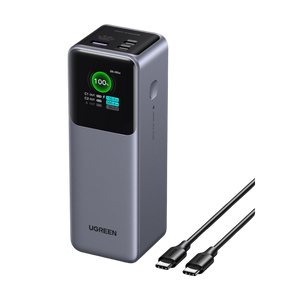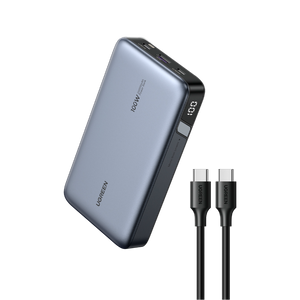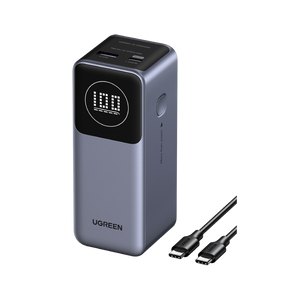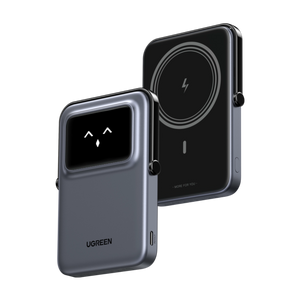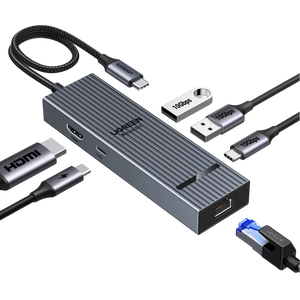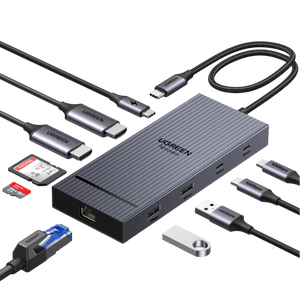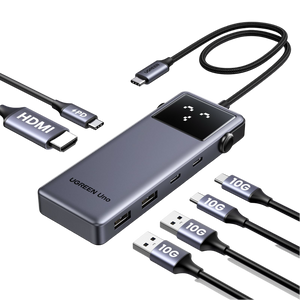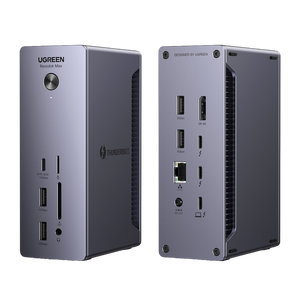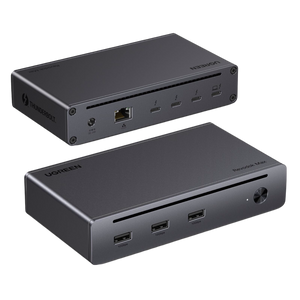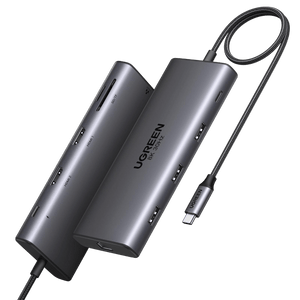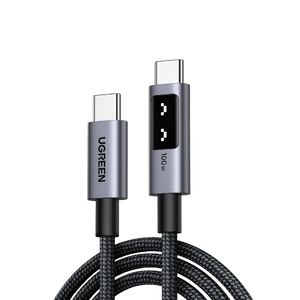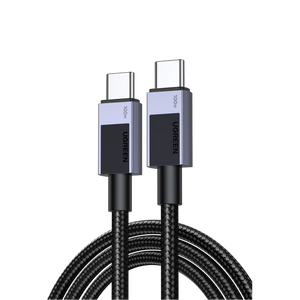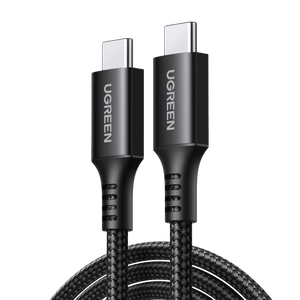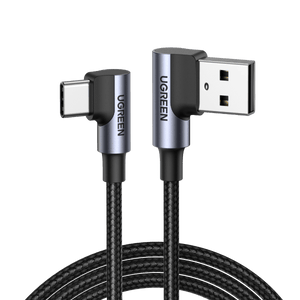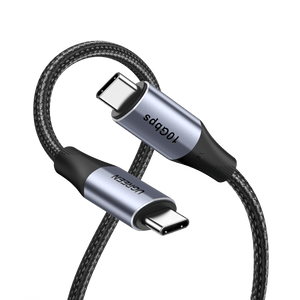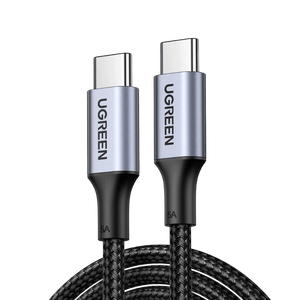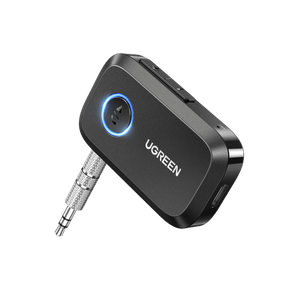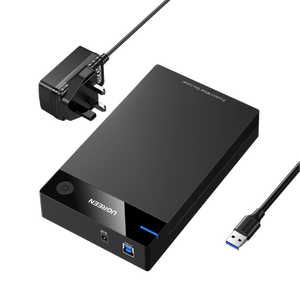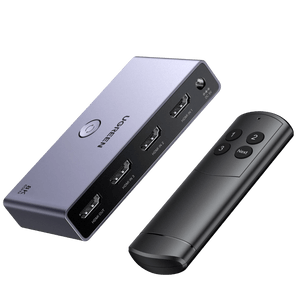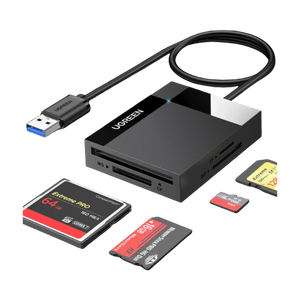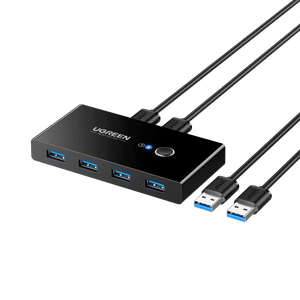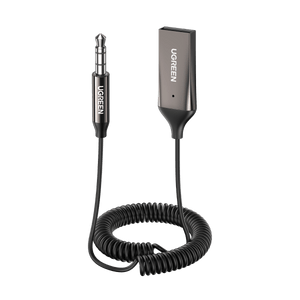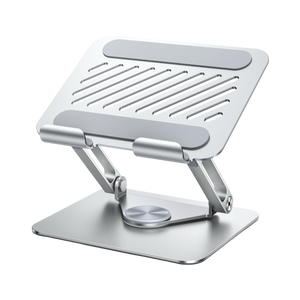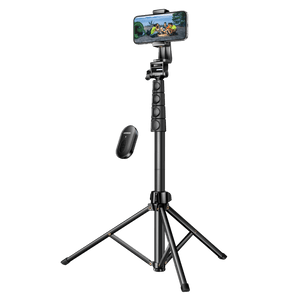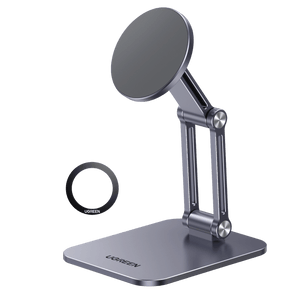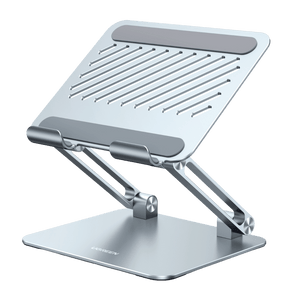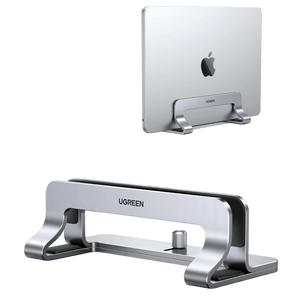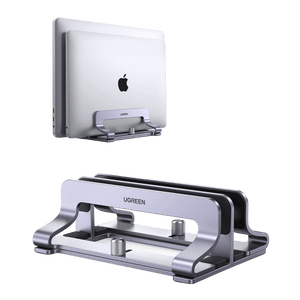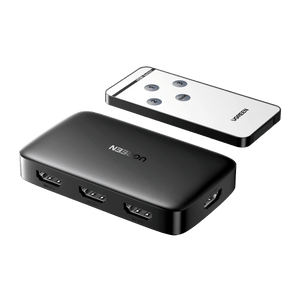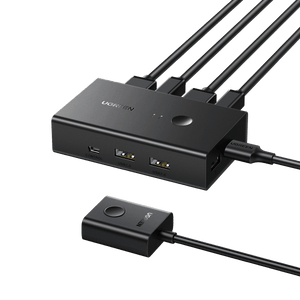Choosing the Right HDMI Ports: Types, Uses, and Essential Tips
HDMI (High-Definition Multimedia Interface) is at the core of modern multimedia systems, providing seamless audio/video transfer between devices such as televisions, gaming consoles, projectors, and computers. In this article, we take an in-depth look into HDMI ports, connectors, and cables; their types, uses, and differences, as well as tips on selecting the appropriate cable connection, will all be covered as we explain why choosing between HDMI and DisplayPort connections could make all the difference to your setup experience.

What Is an HDMI Port and Why is It Used?
An HDMI port is a hardware interface designed for transmitting both high-definition video and audio signals seamlessly between devices, using a High-Definition Multimedia Interface as its standard connection protocol for multimedia systems. Since their introduction in 2002, HDMI ports have quickly become a go-to option in home entertainment setups as well as professional AV setups alike.
At its core, an HDMI port serves as the entry and exit points for high-speed data transfer between connected devices. It enables uncompressed transmission of video signals ranging from SD resolution up to 8K UHD and multichannel audio formats like Dolby Atmos. HDMI replaces older technologies such as SCART, VGA, and DVI by merging audio/video signals onto one cable, reducing clutter and making multimedia setups simpler and more efficient.
Each HDMI port features 19 pins, with their arrangement depending on whether or not it is Standard, Mini, or Micro HDMI compatible. These pins allow data streams for video, audio, control functions, and Ethernet connectivity to pass through it.
Primary Functions and Capabilities of HDMI Cables
An HDMI port serves to transfer high-quality digital signals between source devices, like laptops, gaming consoles, or Blu-ray players, and display devices like televisions or monitors. Here is a breakdown of its key capabilities and uses:
●High-Definition Video Transmission: HDMI ports have been specifically designed to accommodate resolutions up to 8K with refresh rates up to 120Hz, providing vivid and detailed visuals for gaming and movies alike. They also enable 3D video playback and HDR (High Dynamic Range) content, giving deeper contrast and vivid hues.
●Multichannel Audio Streaming: HDMI provides multichannel audio streaming over one cable, eliminating the need for separate connections. It also supports an Audio Return Channel (ARC), which enables TVs to send back audio tracks directly back to an AV receiver using the same HDMI cable used to receive video input.
●Consumer Electronics Control): HDMI ports support CEC, allowing users to conveniently control multiple connected devices such as a TV, soundbar, and gaming console from one remote control. This simplifies user interactions while increasing convenience by synching all connected devices together.
●Ethernet Over HDMI: Some HDMI ports offer Ethernet channels, enabling network connectivity between devices connected via an HDMI port. They are useful when multiple connected devices need to share one internet connection.
●Innovative Technology: HDMI supports HDCP (High-bandwidth Digital Content Protection), an anti-piracy technology used to stop any unauthorized copies from being made. This protects digital media as it moves from source to display device and helps ensure its integrity is not altered during transmission.

HDMI Port Applications
HDMI ports have become a cornerstone of consumer and professional electronic setups alike, including
●Streaming Devices: HDMI provides the bridge between streaming devices, set-top boxes, and Blu-ray players and televisions, providing HD video with surround sound audio.
●Gaming Consoles: For an immersive gaming experience, modern consoles such as PlayStation and Xbox utilize HDMI's high-resolution output with low latency to deliver an interactive gaming experience.
●Laptops and Computers: HDMI ports on laptops and PCs allow users to easily connect external monitors or projectors for improved productivity or presentations. In office setups, pairing these devices with a docking station can streamline cable management and provide additional connectivity options.
●Professional AV Systems: While HDMI may be popular among office environments, its use in conference rooms and broadcast studios is also quite prevalent.
●Cameras and Portable Devices: Devices such as DSLR cameras and camcorders utilise Mini or Micro HDMI ports to preview content on larger screens for quick previewing and easier sharing.
●Automotive Systems: HDMI ports can also be found in car entertainment systems, where they connect multimedia devices such as movies or games to screens so passengers can watch or play them during long journeys.

Types of HDMI Cables and Their Differences
HDMI cables are designed to transmit high-quality audio and video between devices, with different categories offering different levels of performance. As technology has advanced, these cables have become optimized to support higher resolutions and faster refresh rates. Here is a breakdown of all of the main HDMI cable types, along with their bandwidth capacities and potential use cases.
Standard HDMI Cable (Category 1)
Standard HDMI cables, also known as Category 1, offer resolutions up to 1080i or 720p with a maximum bandwidth of 4.95 Gbps. They're best suited for older HDTVs, DVD players, and home entertainment systems where basic high-definition output suffices. However, they do provide reliable performance but aren't suitable for modern high-resolution content.
Standard HDMI Cable with Ethernet
This type of cable expands on the basic Standard HDMI (Category 1) by including a dedicated HDMI Ethernet Channel (HEC). It supports 1080i or 720p resolutions with a bandwidth of 4.95 Gbps while simultaneously sharing an internet connection through the same cable, making this type suitable for smart TVs and media players requiring network connectivity in addition to audio/video transmission.
High-Speed HDMI Cables (Category 2)
These HDMI cables support resolutions up to 1080p and 4K at 30Hz with a bandwidth of 10.2 Gbps, making them suitable for gaming consoles, Blu-ray players, and 4K streaming devices that don't require higher refresh rates. They provide a stable connection for standard Ultra HD content.
High-Speed HDMI Cable with Ethernet
This cable offers all of the performance benefits associated with regular High-Speed HDMI cables while adding a dedicated Ethernet channel with 10.2 Gbps of bandwidth that supports 1080p and 4K resolution at 30Hz, along with network communication between connected devices. It’s a deal for users seeking to simplify smart home setups by combining internet and media signals onto one cable, making connection simpler.
HDMI Cable (4K) - Premium High-Speed HDMI Cable (Category 3)
These Premium High-Speed HDMI cables, commonly known as 4K UltraHD cables, offer optimal 4K resolution at 60Hz with an 18 Gbps bandwidth. In addition, these cables support HDR (High Dynamic Range) technology to optimize contrast and color accuracy for a superior viewing experience. They are perfect for home theaters, gaming consoles, such as PlayStation 5 and Xbox Series X gaming, streaming devices that require reliable high-resolution content streaming, as well as any device needing reliable connections requiring high-resolution content streaming devices.
HDMI Cable (8K) - Ultra High-Speed HDMI Cable (Category 4)
These HDMI cables designed specifically to transmit 8K content are referred to as Ultra High-Speed HDMI cables. They support either 8K at 60Hz or 4K at 120Hz transmission rates and feature advanced features like Variable Refresh Rate (VRR) and Enhanced Audio Return Channel (eARC), making these futureproof for compatibility with the latest media formats.

How Can I Tell What HDMI Port I Have
Knowing which HDMI type you have available on Your Device is essential when connecting external screens, sound systems, or gaming consoles. There are various HDMI types available; being able to identify which one matches up with your specific device ensures compatibility and prevents connectivity issues. Here are some practical steps for identifying HDMI Ports on Devices such as TVs, Laptops or Cameras.
Locating an HDMI port on your device is straightforward:
●Review Labeling: For starters, review its label for terms such as HDMI ARC (Audio Return Channel) or 2.0 near its port
●Measure its size: Mini and Micro HDMI ports are usually found on portable devices; these will need to be measured accordingly.
●Check Your User Manuals: Manuals provide detailed information on port types and specifications specific to your device.

Image from Wikipedia
What Is HDMI Connector And What Does It Use For
HDMI connectors and ports are closely related but serve different functions. For instance,
●HDMI Connector: The end of the cable that plugs into a device.
●HDMI Port: The socket on the device that receives the connector.
Both HDMI ports and connectors facilitate the seamless transmission of high-definition content. They come in various shapes and sizes; their function remains the same: providing access to HD content.
●Male Connectors: Found at the ends of HDMI cables, male connectors connect directly to female ports on devices like TVs and gaming consoles.
●Female Connectors: Recessed inside devices such as televisions or gaming consoles in order to receive male connectors from HDMI cables.

Different Types and Versions of HDMI Connectors
Versions of HDMI Connectors
Over time, HDMI technology has evolved to support higher resolutions, better audio, and faster data transfer rates. Below is a comparison of the key versions and their capabilities.
|
HDMI Version |
Year Released |
Max Resolution / Refresh Rate |
Transmission Rate |
HDR Support |
Audio Features |
|
HDMI 1.0 |
2002 |
1080p @ 60Hz |
4.95 Gbps |
No |
Basic audio support |
|
HDMI 1.1/1.2 |
2005 |
1440p @ 30 Hz |
4.95 Gbps |
No |
DVD-Audio, One-Bit Audio |
|
HDMI 1.3/1.4 |
2009 |
4K @ 60Hz |
10.2 Gbps |
No |
ARC (Audio Return Channel) |
|
HDMI 2.0 |
2013 |
5K @ 30Hz |
18 Gbps |
Yes |
Supports 32 audio channels |
|
HDMI 2.1 |
2017 |
8K @ 120Hz, 10K @ 60Hz |
48 Gbps |
Dynamic HDR |
eARC for enhanced audio |
Each version expands on the last, offering new features such as HDR (High Dynamic Range) for vibrant colours, eARC (Enhanced Audio Return Channel) for improved audio, and higher refresh rates for smoother visuals.
HDMI Connector Types
While all HDMI connectors serve the same central purpose of delivering HD audio and video signals, their designs, sizes, and uses vary widely depending on your devices. With five primary types currently available today, each having unique differences. Understanding these variations ensures you use the appropriate connectors. Below is an in-depth explanation of all five types of HDMI connectors along with how they differ and where best they should be implemented.

Image from Wikipedia
Type A (Standard HDMI Connector)
The Type A HDMI connector is one of the most widely used and recognized connections, often found on televisions, computer monitors, gaming consoles, and Blu-ray players. This connector features a male end measuring 13.9mm X 4.45mm that connects securely with an increased female socket for a reliable connection.
With 19 pins inside its connector, this adapter supports video resolutions ranging from standard definition (SDTV) to ultra-high definition (4K). Type A connectors are an ideal choice for multimedia setups that utilize DVI-D connections thanks to simple adapters; their widespread presence makes them the go-to option in consumer electronics applications for audio/video transmission.
Type B (Dual-Link HDMI Connector)
Although designed to handle higher bandwidth through its dual-link interface, the Type B HDMI connector never became widespread in use. Intended to support professional displays requiring higher data transmission rates, its popularity decreased with the release of HDMI 1.3, which enhanced single-link connection speeds; as a result, Type B became mostly obsolete from August 2021; although larger than Type A and featuring 29 pins it remains unused by mainstream consumer electronics devices (you may come across references to it in older documentation); advancements have rendered Type B obsolete, making its ecosystem simpler while providing one unified solution across versions.
Type C (Mini HDMI Connector)
The mini HDMI connector was developed to offer all of the same functionality of Type A while fitting into smaller form factors suitable for portable devices. Measuring 10.42mm x 2.42mm, this connector can often be found on DSLR cameras, camcorders, tablets, and portable projectors. Featuring the same 19-pin configuration as its larger counterpart for maximum compatibility across devices. Mini HDMI cables feature both Type C and A connectors to facilitate quick connections between portable devices and larger displays, making these Type C-equipped cables perfect for content creators and photographers who must quickly preview media on larger screens without compromising signal quality.
Type D (Micro HDMI Connector)
The Type D, or micro HDMI connector, is even smaller than Type C at 5.83mm X 2.20mm in dimension. They are designed specifically to accommodate highly portable devices like smartphones and action cameras with limited storage space like media players and media streaming services like Netflix. While maintaining its 19-pin configuration ensures it delivers quality audio/video transmission. It is ideal for gadgets where space may be an issue, but users still require external displays for media playback or presentations; its smaller form factor provides added mobility. Functionally identical to Types A & C but adds flexibility - particularly travel-friendly devices!
Type E (Automotive HDMI Connector)
This automotive HDMI connector was specifically created to withstand the demanding conditions found within vehicles. Entertainment systems, navigation displays, and infotainment hubs all depend on it for secure connections. This connector features a locking mechanism to prevent accidental disconnection due to vibrations or movement, providing consistent signal transmission on the road.
Furthermore, its heat and dust resistance makes it suitable for long-term use in vehicles. Type E connectors play an integral role in modern automotive systems by helping integrate multimedia capabilities seamlessly into cars, buses, and other transportation vehicles without compromising reliability.
How to Buy the Right HDMI Cable
When selecting an HDMI cable, it is essential that several factors be taken into consideration:
Resolution and Refresh Rate
To ensure maximum compatibility for your device, ensure it supports its maximum resolution and refresh rate; for instance, if you own a 4K TV, then an HDMI 2.0 or 2.1 will be the appropriate HDMI cable due to higher bandwidth and refresh rates. HDMI 2.0 is best for gaming, and HDR at a reasonable price. On the other hand, you need the highest quality only if you have an 8K TV or a next-gen console. It’s a bit pricier as well. 
Cable Length
Length Selection: Choose the appropriate length based on the distance between devices. Using cables that are too long can lead to signal degradation, so it's generally recommended to keep the length under 10 meters.
Signal Boosting: For long-distance transmission over 10 feet, consider using HDMI extenders and active HDMI cables to boost signal strength without losing quality.
Cable Version
HDMI cable versions are the most vital factor to consider. Therefore, you should choose the best and most innovative version that can fulfil your device’s requirements. Choose from one of the following HDMI versions:
●HDMI 1.0: Supports 1080p@60Hz
●HDMI 1.4: Handles 1080p and some 4K video but has a lower bandwidth.
●HDMI 2.0: Supports 4K@60Hz with higher bandwidth, suitable for most modern devices.
●HDMI 2.1: Designed specifically for the latest devices and supports 8K video and higher refresh rates, ideal for future high-end devices.
Therefore choose the 2.0 or 2.1 for the better results. By investing in high-end versions, you can upgrade your setup at any time.
Bandwidth
Bandwidth is an essential factor when selecting an HDMI cable and can make or break your viewing experience. A higher bandwidth allows more data to pass between your devices, which in turn enables higher resolutions, richer colors, faster refresh rates, and advanced audio formats to function optimally.
Standard cables with lower bandwidths are sufficient for HD content, while high-speed (18 Gbps) cables may be preferable when streaming 4K videos and HDR content. If you are using an 8K TV or gaming on next-gen consoles, consider investing in an ultra high-speed HDMI cable (48 Gbps). By matching its bandwidth requirements to your setup's needs, ensuring maximum performance without unnecessary lag or quality loss.
Special Features
When purchasing audio cables for audio systems, seek cables with Ethernet support or ARC/eARC compatibility for optimal results. Ugreen recommends the following HDMI Cable: Ugreen 2.1 HDMI Cable is perfect for 8K setups as it provides fast data transfer and future-proof compatibility.
Best Choices of UGREEN HDMI Cables
When selecting HDMI cables, selecting the ideal one ensures optimal performance of high-definition content and gaming. Below are three excellent HDMI options from Ugreen's UK store that each are tailored to specific needs.
UGREEN 8K 60Hz/ 4K 120Hz HDMI 2.1 Cotton Braided Cable
{{UGPRODUCT}}
This HDMI 2.1 cable supports 8K at 60Hz and 4K at 120Hz for superior performance with its bandwidth of 48 Gbps. Featuring cotton braiding for extra durability, it is suitable for gaming consoles, high-end home theater setups, and future-proofing entertainment systems, and future-proofing. Furthermore, its robust construction provides for a safe connection without interference or obstructions.
UGREEN 8K 60Hz eARC HDMI 2.1 Cable (1m-5m)
{{UGPRODUCT}}
This HDMI 2.1 cable features 8K at 60Hz and 4K at 120Hz capabilities, as well as enhanced audio performance through eARC (Enhanced Audio Return Channel). Boasting 48 Gbps bandwidth for lossless audio transmission, making this HDMI 2.1 cable perfect for home theater setups or immersive sound setups of all kinds. Furthermore, its multiple length options (1m-5m) can meet different requirements.
UGREEN KVM Switch for Two PCs with 4K 60Hz HDMI
{{UGPRODUCT}}
This KVM switch is a flexible solution designed for multitasking professionals who need seamless switching between two systems without reconnecting devices. Support for 4K content makes this device perfect for workstations and ensures smooth video output and transitions.
HDMI vs DisplayPort: Which Should You Select?
DisplayPort and HDMI are both capable of transmitting audio and video, but each has different strengths.
HDMI
HDMI is built for TVs and home entertainment systems. Support for advanced audio features like Dolby Atmos makes this ideal for streaming devices, Blu-ray players, and gaming consoles.
DisplayPort
DisplayPort deals with computer monitors with higher resolutions and refresh rates with multi-channel audio support. DisplayPort is often chosen over HDMI when it comes to gaming PCs because of its smoother graphics output.
Let’s understand their differences in a detailed comparison.
|
Features |
HDMI Port |
DisplayPort |
|
Primary Use |
TVs, consumer electronics, some monitors |
PCs, professional monitors, multi-display setups |
|
Max Resolution |
Up to 10K with HDMI 2.1 |
Up to 16K with DP 2.0 |
|
Refresh Rate |
4K @ 120Hz, 8K @ 60Hz (HDMI 2.1) |
4K @ 240Hz, 8K @ 60Hz, supports higher rates |
|
Bandwidth |
Up to 48 Gbps (HDMI 2.1) |
Up to 80 Gbps (DP 2.0) |
|
Audio Support |
Yes (built-in) |
Yes (optional) |
|
Cable Length/Sound Quality |
Effective up to about 10 meters without signal loss; longer distances require active cables |
Best for longer distances (up to 15 meters) without significant loss. |
|
Multi-Display |
Not native (requires adapters) |
Supports daisy-chaining with DP 1.2 and above |
|
Connector Type |
Diversified types(Standard, Mini, Micro) widely used in consumer electronics |
Standard and Mini DisplayPort connectors, primarily found on PCs and monitors |
|
Adaptive Sync Technology |
Variable refresh rates (VRR) with HDMI 2.1 |
Allowing for smoother gameplay and reduced screen tearing |
|
Special Features |
ARC, eARC, CEC |
MST (Multi-Stream Transport), HDR10+ |
Conclusion
HDMI ports and cables are essential components of modern multimedia setups, providing high-quality video and audio transmission across various devices. Understanding the various types of HDMI connectors will ensure you select the best one for your needs, whether it will be setting up a home theater system, connecting gaming consoles, or showing content on a laptop computer.
As HDMI technology evolves, newer versions, such as HDMI 2.1, offer superior performance and future compatibility. When buying an HDMI cable for your device, make sure it meets its resolution and refresh rate requirements, and consider your cable length needs to avoid signal loss. By investing in suitable HDMI equipment, you're sure to have a superior multimedia experience.










